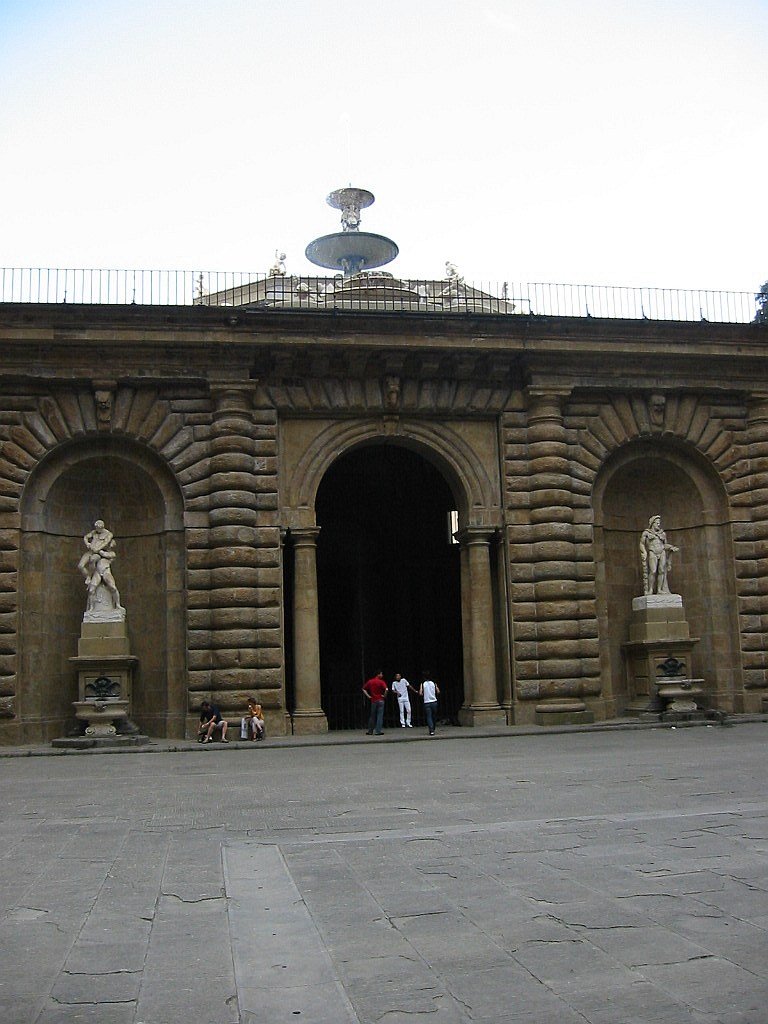
Giardino di Boboli
The Giardino di Boboli or Boboli Gardens were created for the Medici's when they acquired the Palazzo Pitti in 1550. They are an excellent example of a Renaissance Garden with their careful mixture of geometrically laid-out gardens interspersed with the requisite sculptures. The photo to the left shows the entrance to the Boboli Gardens from the a main courtyard within the Palazzo Pitti . Walking up a flight of stairs, you emerge by the Neptune Fountain, which demarcates the end of the palace and the beginning of the Gardens. The photo to the right was taken near the Isolotto, and looks down a row of trees to the fountain and palace area. Just above the fountain (partially visible in the photo to the right) is a large amphitheater, built on the spot where the stone for the Palazzo Pitti was quarried. There is a large amphitheater, decorated with busts above the seating area. It is historically significant as the first setting in which opera was ever performed--apparently here the fat lady sang for the first time.
By ascending a long set of stairs from the amphitheater, visitors to the Giardino di Boboli reach the Isolotto, a small lake area. Surrounded by statues, in the center of the lake is a copy of the sculptor Giambologna's Oceanus fountain; the original is found in the Bargello. To either side of the Isolotto are paths that lead to other parts of the garden. Indeed, the areas of the gardens covered here only represent a portion of the total, just those areas that extend from the Palazzo Pitti to the summit of the hill. The remainder of the gardens stretch from the old city walls up to the Palazzo Pitti.
By walking up yet another flight of steps one arrives at the Giardino dei Cavallieri, a flower garden (largely peonies and roses) that overlook a plateau at the top of the hill stretching up from the Palazzo Pitti. Carefully laid out in rows separated by stone paths, this is a quiet place to overlook the Tuscan countryside. Beside the Giardino dei Cavallieri is a small museum of porcelain wares, open to visitors.